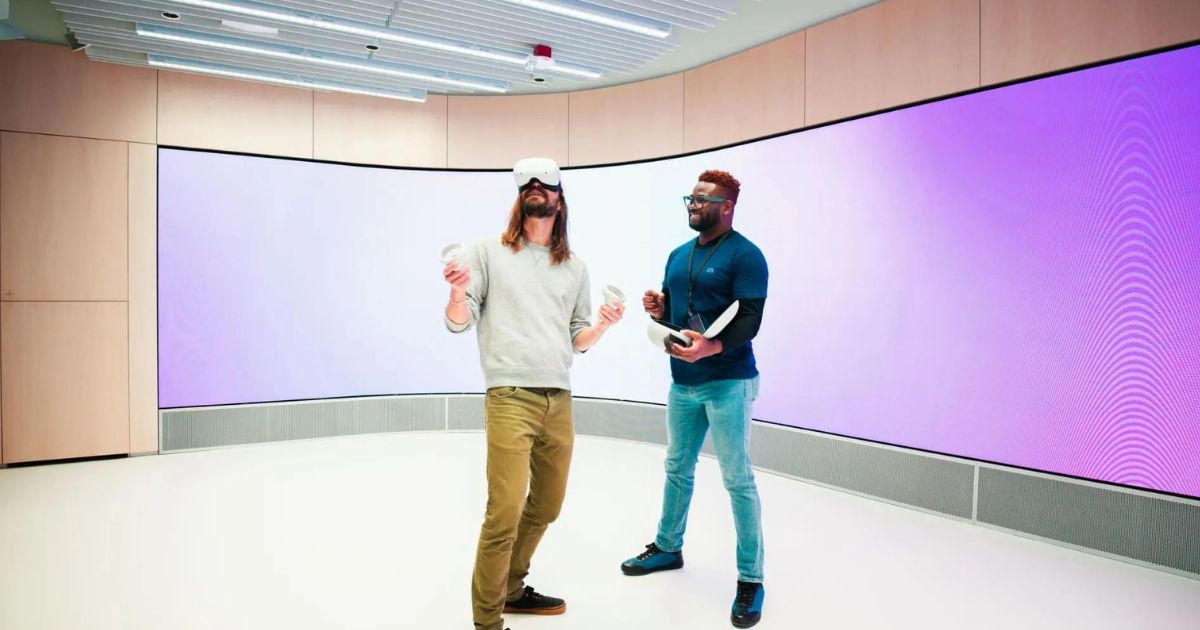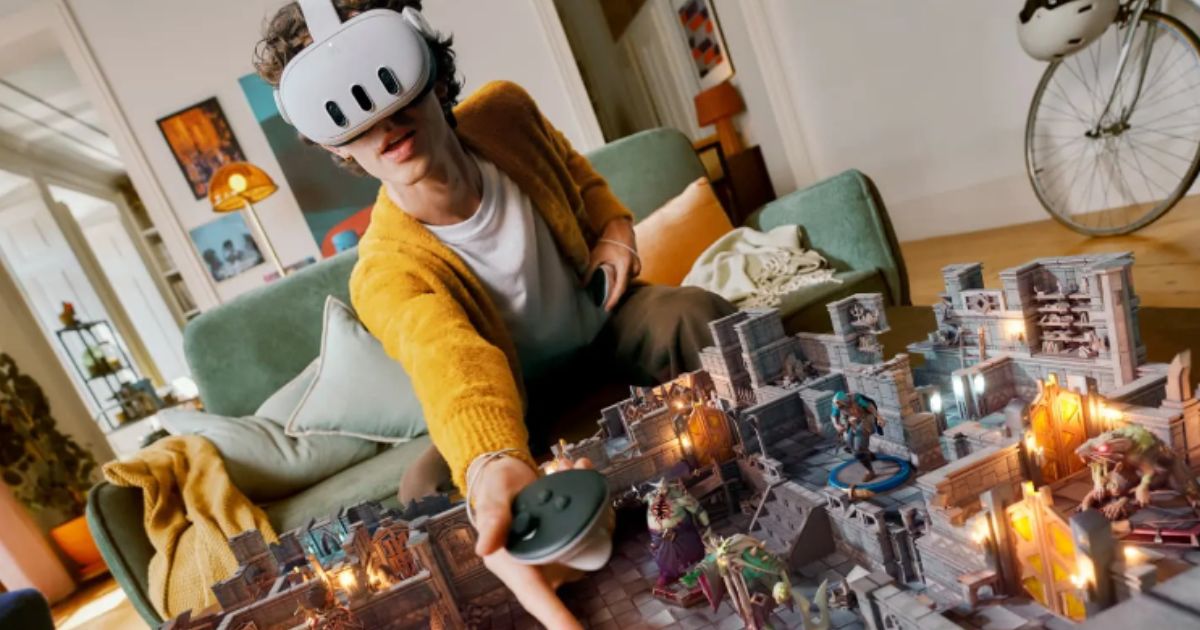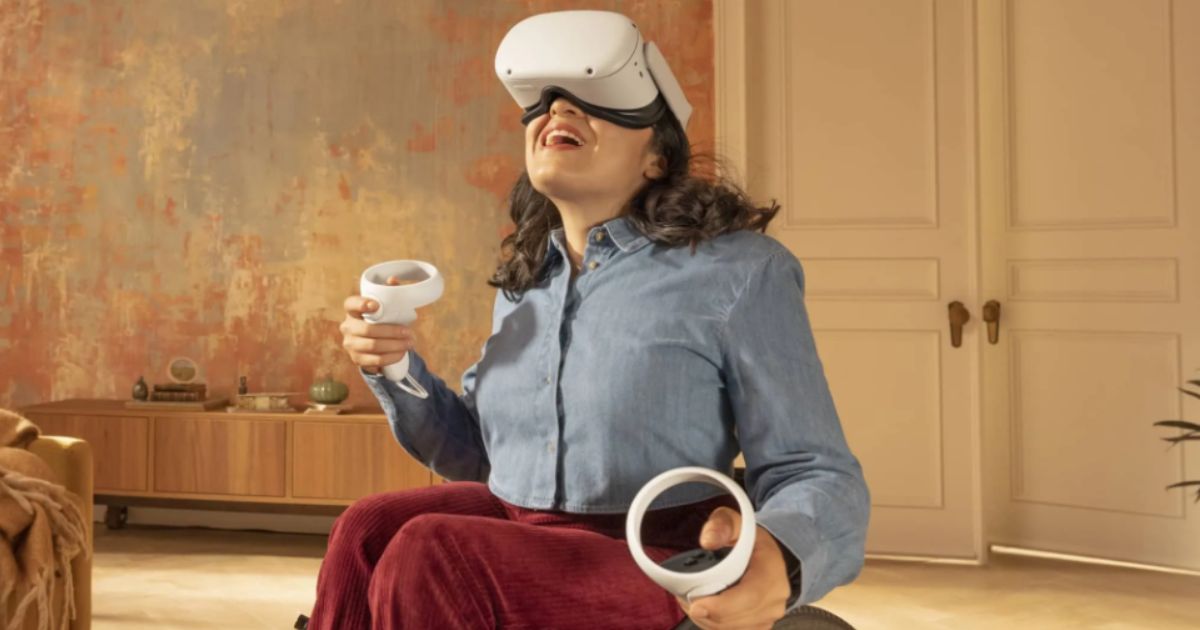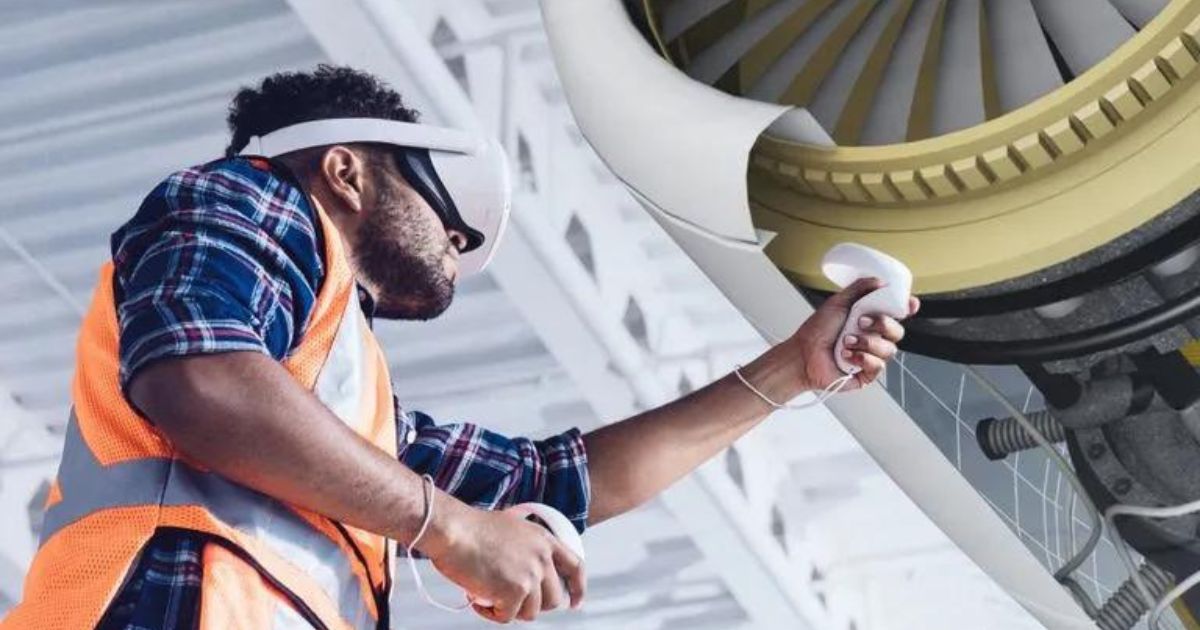
The world of virtual reality is more nuanced than you might expect, with different headset options and other hardware. When it comes to virtual reality, or “VR,” there are two central styles: a virtual reality headset and a mixed reality headset. The two have very distinct differences and feature sets. We’ll explore both in this article and find one that is best for you.
What is virtual reality?
Virtual Reality (VR) uses a display close to your eyes to fully immerse you into a three-dimensional, computer-generated world. The hardware and accessories that help to achieve this immersion are often headset-style devices in combination with a set of headphones. This type of setup uses controllers or other input devices to help you feel like you are physically present in a fully simulated world. If you want an escape, traditional VR creates an entirely immersive digital environment that blocks out the physical world.

What is mixed reality?
Mixed Reality (MR) uses more complex hardware to blend your real-world surroundings with virtual assets you can interact with in real time. The key difference from VR, which completely immerses you, is that MR overlays digital content into your real-world space. This style of technology has excellent applications in the education, science and medical fields. This is because you can create something virtually and simulate how it work in the real world. For example, a car mechanic could see how a virtual part could fit into a real-world car, or you could setup a virtual chessboard on a real table in your living space. Mixed reality helps to blur your real world and virtual realities to enhance your interaction with both. This seamless integration allows for more intuitive and practical applications, making tasks more accessible and efficient.

What can I do with a virtual reality or mixed reality headset?
VR and MR headsets offer unique ways to interact with digital content, making them powerful tools for professional and personal use. One of my favourite ways to jump into the VR realm is with video games. These unique sets of hardware offer a greater level of immersion over traditional television and monitor screens. There are other ways to use VR, like Virtual Travel, Fitness with virtual sports and meeting others online in simulated social spaces.

You could use mixed reality (MR) in the educational field to engage in virtual science experiments or interactive historical reenactments. Headsets like the Apple Vision Pro make remote work feel more natural, with easier collaboration with colleagues in a shared virtual workspace, enhancing productivity and communication. Of course, gaming with mixed reality offers the chance to play games that integrate virtual elements into your real-world environment. MR headsets are also great for fashion and design, allowing users to visualize and customize spaces and clothing with actual parts of their home and clothing. In terms of home design, using an MR headset you could use virtual furniture placements in your actual living space to decide if it fits.
What kind of headsets are there (standalone vs tethered headsets)?
When it comes to VR and MR headset hardware, there are two main types: standalone and tethered models. Each comes with its own pluses and minuses, let’s have look at the feature sets and what they can offer you.
Standalone virtual reality headsets
Standalone VR headsets are self-contained devices that do not require a connection to a PC or console. They have built-in processors, displays, sensors, and batteries. One of the top models for a standalone VR experience is the Meta Quest 3. Standalone hardware offers advantages like greater portability, streamlined set-up, and cost-effectiveness, as it doesn’t require a high-end PC for operation. On the flip side, their performance is limited by their built-in hardware, battery life.
Tethered virtual reality headsets
Tethered headsets are connected to a PC or gaming console via cables and depend on external hardware for processing. This extra processing power helps to deliver high-quality graphics and performance. Popular models include the PlayStation VR2, HTC Vive, and Oculus Rift. Being tethered offers advantages like better graphics and performance due to the support of external hardware. In terms of disadvantages, they must always stay connected, and wires can create more clutter and limit mobility.
Choosing between standalone and tethered headsets depends on your priorities and use cases. If you value portability and ease of use, a standalone headset might be the best choice. A tethered headset is the way to go if you seek high performance and advanced features.
How can I safely use a virtual reality or mixed reality headset?
The virtual reality experience is fun and exciting, but it’s important to prioritize your personal safety. Before using a VR or MR device, be sure to read and follow the manufacturer’s guidelines and recommendations. It’s also important to make sure you have a clear, open space to operate your device in. It’s especially important to have a hazard-free space for initial set-up as you get used to the ins and outs of virtual reality.
Follow the instructions for fitting your device carefully to get the best viewing angle and avoid eye strain. You should always have a clear, open space free of objects that can cause trips and falls. Using VR devices can cause motion sickness, especially if you don’t take intermittent breaks. If motion sickness does arise, be sure to take an extended break and rest. These steps will help you safely get the most out of your VR and MR hardware.

What are the latest trends in VR and MR technology?
The world of VR and MR has recently seen trends in high-fidelity performance upgrades, metaverse expansion, and virtual healthcare. Newer headsets are now packing ultra-HD screens and spatial audio to create deeper user immersion. The metaverse and other online virtual spaces have continued to grow, with hopes that VR will usher in new social and commerce-based spaces. In the area of healthcare, medical professionals have been experimenting with VR and augmented reality to diagnose and even complete complex operations on patients remotely.
Summary of the content for virtual reality devices
VR and MR headsets offer distinct experiences, each with applications that suit different use cases. If you are looking for a complete “escape” VR headsets aim to fully immerse you in a digital environment, making them ideal for gaming, virtual travel, and fitness. MR headsets, on the other hand, blend digital content with the environment around you, helping to augment work, school and entertainment in your household. Depending on when, and where you use the VR hardware choosing between standalone and tethered headsets is key. Consider your needs for portability versus performance before making a final decision.
Additional reads about virtual reality
Your journey into the exciting world of virtual reality doesn’t end here. I’ve included additional reads on Best Buy Blog covering various aspects of VR technology. Check out our comprehensive VR buying guide to help you choose the right headset for your needs. Explore the things you can do with virtual reality technology to discover more applications beyond gaming. If you’re interested in staying fit using a VR device, our article on new workouts with VR fitness offers innovative ways to incorporate VR into your exercise routine, enjoy!
For all your virtual reality needs, from headsets to accessories, check out BestBuy.ca’s large assortment of VR options from major brands like Meta and PlayStation.





